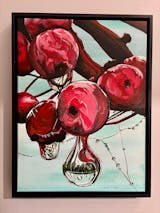When it comes to edible projects like dying Easter eggs, nothing is more important than food safety.
Our Natural Egg Dye Kit uses natural, food-grade extracts made from spices and veggies, unlike many conventional egg dyes on the market that contain toxic chemicals that shouldn't be ingested.
But what's so bad about those chemicals, anyway?
In this post, we'll provide the facts about some of the most commonly used dyes in conventional egg dyes.
Blue #1
The dye Blue #1 can cause hypersensitivity reactions (source) and may inhibit nerve-cell development in fetuses (source). It may cause chromosomal damage (source), and there is evidence that suggest a potential for neurotoxicity (source). This dye is banned in France, the UK, and Finland.
Red #3
The dye Red #3 is linked to a possible increased risk of thyroid tumors (source). It has also been found to be genotoxic, damaging to genetic information within cells (source). The FDA made an attempt to ban it in the United States, but has not yet banned the dye in all products.
Yellow #5
The dye Yellow #5 can cause irritability, restlessness, and sleep disturbance in children (source). It has been found to contain carcinogens (source) and can cause hives (source) and asthma symptoms (source).This dye is also among the top allergic response-causing food dyes (source) and may also cause hyperactivity (source). Even worse, Yellow #5 may be genotoxic, or damaging to genetic information within cells. Because of these effects, it's banned in Norway and the UK.
Yellow #6
The dye yellow #6 has been found to contain carcinogens (source) and can cause allergic reactions (source). It may also cause hyperactivity in children (source) and adrenal and testicular tumors (source). It's banned in Norway, Sweden, and the UK.
Red #40
The dye Red #40 has been found to contain carcinogens (source), and may cause allergic reactions and migraines (source). It may also cause hyperactivity in children (source) and be genotoxic (source).
Our Natural Egg Dye Kit does not contain any of these harmful chemicals; instead, we use extracts made from veggies and spices like spinach, beet, turmeric, red cabbage, and purple carrots. Plus, this kit contains no gluten, nuts, dairy, animal products, or petroleum-based ingredients. The way we see it, the best way to dye your food is with, well, food!

Interested in more Natural Earth Paint tips, tutorials, and techniques? Visit our Tips page!
Follow us on Instagram, Facebook, and Pinterest for more natural inspiration.







